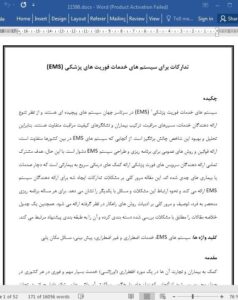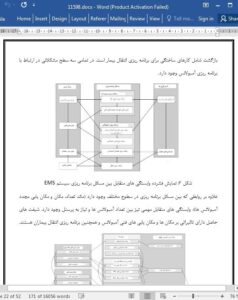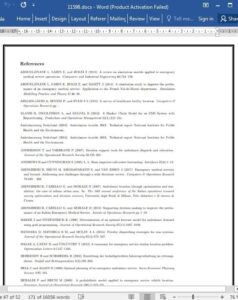Abstract
Emergency Medical Service (EMS) systems worldwide are complex systems, characterised by significant variation in service providers, care pathways, patient case-mix and quality care indicators. Analysing and improving them is therefore challenging. Since EMS systems differ between countries, it is difficult to provide generic rules and approaches for EMS planning. Nevertheless, the common goal for all service providers is to offer medical assistance to patients with serious injuries or illnesses as quickly as possible. This paper presents an overview of logistical problems arising for EMS providers, demonstrating how some of these problems are related and intertwined. For each individual planning problem, a description as well as a concise literature overview of solution approaches considered is given. A summary table classifies the literature according to the problems addressed and connects it to the proposed taxonomy.
Introduction
Helping and rescuing patients in case of an emergency is an important and urgent service in every country in the world. Since ambulance response times can be a crucial factor in patient survival, ambulances are expected to arrive at the scene of reported incidents as quickly as possible, raising important questions of where ambulances should be located and how many should be deployed. As Emergency Medical Service (EMS) systems differ between countries, there might be different answers to these questions. Operational Research (OR) literature offers many different models and approaches to tackle the ambulance location problem. As most EMS systems can be grouped into one of two main systems, the Anglo-American and the Franco-German system (Dick, 2003), the approaches should be applicable to more countries than they were initially developed for, but maybe not to all.
Conclusions and recommendations for further research
In this paper, we have overviewed several logistical problems arising for EMS providers. Although demand, response time and workload are often considered separately in the literature, we have highlighted the high degree of interconnection between each of these components. Consequently solving only one problem at a time might not be the best option. Thus, we have advocated papers that have addressed these issues simultaneously. At the very least, hierarchical planning with feedback loops is advantageous although simultaneous planning is preferable. Until recently, most papers have additionally focussed on one particular EMS provider but over the last decade there has been an increase in the emergence of generic models, acclaimed as straightforward to adapt to country specifics. In detailing a “typical” EMS system, we hope that our review will support further research of a generic nature and hence minimise any repetition of research works.











